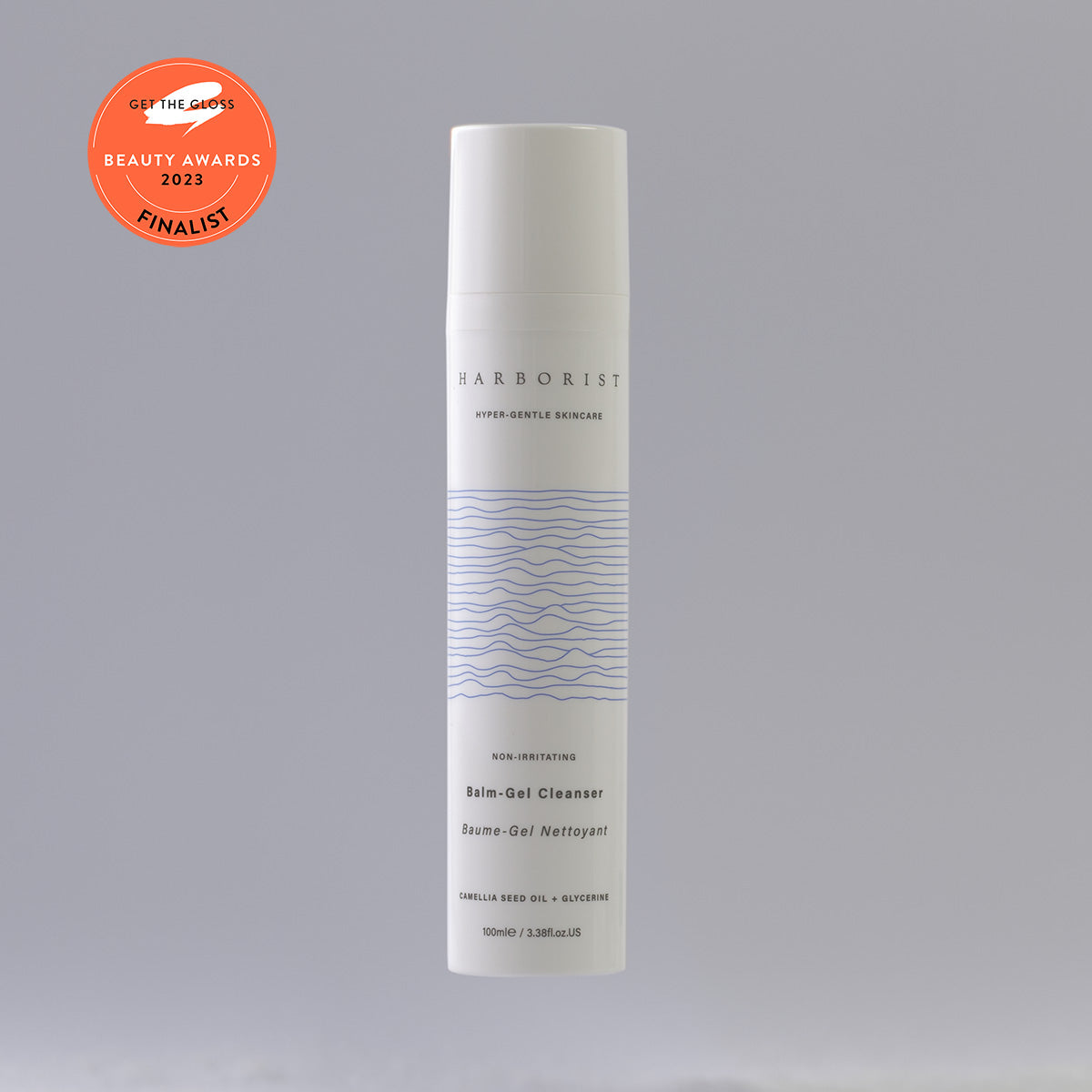Someone once asked how I went about sourcing ingredients, and the answer I gave was through an online database called UL prospector. I later wondered if they were disappointed with the lack of romance in my answer. A better picture might be of the brand owner, journeying off to small farms far away and forming individual relationships like Anita Roddick. Though it may not sound as enticing, databases like ULprospector are an absolute gold mine of information, giving access to suppliers both large and small. I can't imagine how a small brand would have had such free access to all these producers in the past.
Finding suppliers gives me much satisfaction, so I wanted to provide an example of what ingredient sourcing looks like to a small brand, particularly if they're also figuring out how to make the most sustainable choice. I always think the process of figuring out sustainability as like opening a Russian doll - when you think you've got to the smallest one you find there's another one inside.
One of the ingredients in all our formulations, both launched and in the pipeline, is Bisabolol. It's a soothing extract, found in Chamomile.
A less publicised fact is that as a single ingredient, it doesn't usually come from Chamomile but the wood of the Candeia tree in Brazil.
You can probably guess some of the issues with this. The transparency in the sourcing of Bisabolol has previously been murky at best, and was associated with illegal logging. In an attempt to counter the problem, European manufacturers started to make synthetic Bisabolol. The downside of the synthetic version? It contains much less of the active component, up to 50% less. Added to this it also tends to contain Farnesol as an impurity - an EU listed fragrance allergen. In other words, the quality of synthetic Bisabolol is usually inferior to the natural counterpart.
Since then a version of bisabolol has become available which is made from sugarcane via fermentation. Fermentation technology is relatively environmentally friendly, and initially this was the option I was most interested in. But then I wondered - how and where is the sugarcane grown? This is also a material with it's own sustainability issues, although like everything it probably depends on the specific source. Before seeking the answer I started to look again at another candidate from the Brazilian producer Atina.
Founded in 2005, Atina came about solely to create an ethically sourced Bisabolol, derived from the Candeia tree. Since then, they've been working with the FSC, Ecocert, and various academic institutions, providing the cosmetic market with natural bisabolol without the detrimental environmental impact. Materials are sourced locally, then processed at their custom-built facility in the Minas Gerais region.
Like many people, I'm uncomfortable with the idea of chopping down trees for an extract to be used in what is, essentially a luxury product. When I met a representative from Atina at In-Cosmetics Paris last year, I asked how it's possible to obtain an extract from a tree without actually harming trees. She told me they plant and grow the Candeia trees, selectively removing single branches as they grow, allowing the tree to thrive. No forest clearance is needed - the area was cleared 200 years ago for mining so this is potentially adding more trees to the area. They work with individual landowners, meaning the positive impact is social as well as environmental. All farming is overseen by the FSC and Ecocert, with by-products such as pulp repurposed for use in wood composite materials. So despite first impressions about natural Bisabolol being rather unsustainable, I could see how the net impact of this material could be positive with the right process.
One of the most satisfying things about having a brand is finding people and suppliers with the kinds of values you want to see in the world and folding all that good stuff into the products you make.
It took around six months to work out how to get the Atina material to our manufacturer here in the UK. At first, it looked as if we could order directly from the producer. Then it became apparent that the shipping costs from Brazil would cost significantly more than the material, and anyway, flying relatively small quantities from the other side of the world didn't feel like the most responsible choice. After a few months of asking many European suppliers of bisabolol what their source was (they don't always state this), I found a distributor selling the Atina grade in the right quantities. As a result, we'll be using an ultra ethically sourced version in future productions.
One material, finally figured out, though there will always be more dolls waiting to be opened.
Finding suppliers gives me much satisfaction, so I wanted to provide an example of what ingredient sourcing looks like to a small brand, particularly if they're also figuring out how to make the most sustainable choice. I always think the process of figuring out sustainability as like opening a Russian doll - when you think you've got to the smallest one you find there's another one inside.
One of the ingredients in all our formulations, both launched and in the pipeline, is Bisabolol. It's a soothing extract, found in Chamomile.
A less publicised fact is that as a single ingredient, it doesn't usually come from Chamomile but the wood of the Candeia tree in Brazil.
You can probably guess some of the issues with this. The transparency in the sourcing of Bisabolol has previously been murky at best, and was associated with illegal logging. In an attempt to counter the problem, European manufacturers started to make synthetic Bisabolol. The downside of the synthetic version? It contains much less of the active component, up to 50% less. Added to this it also tends to contain Farnesol as an impurity - an EU listed fragrance allergen. In other words, the quality of synthetic Bisabolol is usually inferior to the natural counterpart.
Since then a version of bisabolol has become available which is made from sugarcane via fermentation. Fermentation technology is relatively environmentally friendly, and initially this was the option I was most interested in. But then I wondered - how and where is the sugarcane grown? This is also a material with it's own sustainability issues, although like everything it probably depends on the specific source. Before seeking the answer I started to look again at another candidate from the Brazilian producer Atina.
Founded in 2005, Atina came about solely to create an ethically sourced Bisabolol, derived from the Candeia tree. Since then, they've been working with the FSC, Ecocert, and various academic institutions, providing the cosmetic market with natural bisabolol without the detrimental environmental impact. Materials are sourced locally, then processed at their custom-built facility in the Minas Gerais region.
Like many people, I'm uncomfortable with the idea of chopping down trees for an extract to be used in what is, essentially a luxury product. When I met a representative from Atina at In-Cosmetics Paris last year, I asked how it's possible to obtain an extract from a tree without actually harming trees. She told me they plant and grow the Candeia trees, selectively removing single branches as they grow, allowing the tree to thrive. No forest clearance is needed - the area was cleared 200 years ago for mining so this is potentially adding more trees to the area. They work with individual landowners, meaning the positive impact is social as well as environmental. All farming is overseen by the FSC and Ecocert, with by-products such as pulp repurposed for use in wood composite materials. So despite first impressions about natural Bisabolol being rather unsustainable, I could see how the net impact of this material could be positive with the right process.
One of the most satisfying things about having a brand is finding people and suppliers with the kinds of values you want to see in the world and folding all that good stuff into the products you make.
It took around six months to work out how to get the Atina material to our manufacturer here in the UK. At first, it looked as if we could order directly from the producer. Then it became apparent that the shipping costs from Brazil would cost significantly more than the material, and anyway, flying relatively small quantities from the other side of the world didn't feel like the most responsible choice. After a few months of asking many European suppliers of bisabolol what their source was (they don't always state this), I found a distributor selling the Atina grade in the right quantities. As a result, we'll be using an ultra ethically sourced version in future productions.
One material, finally figured out, though there will always be more dolls waiting to be opened.


